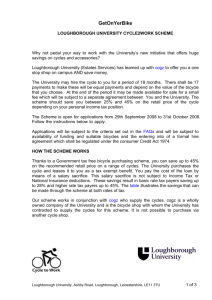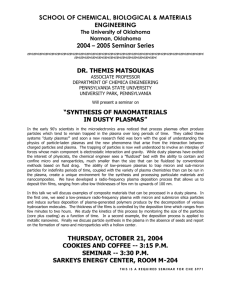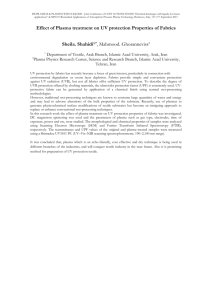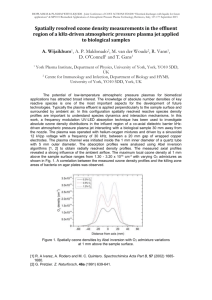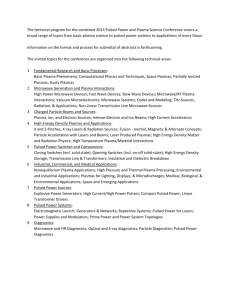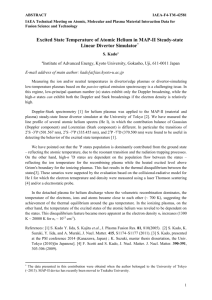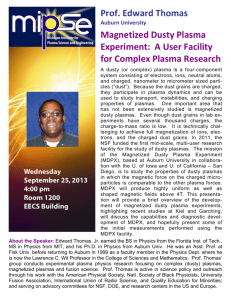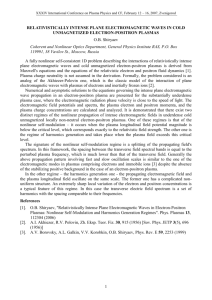AHS_Abstract_final
advertisement
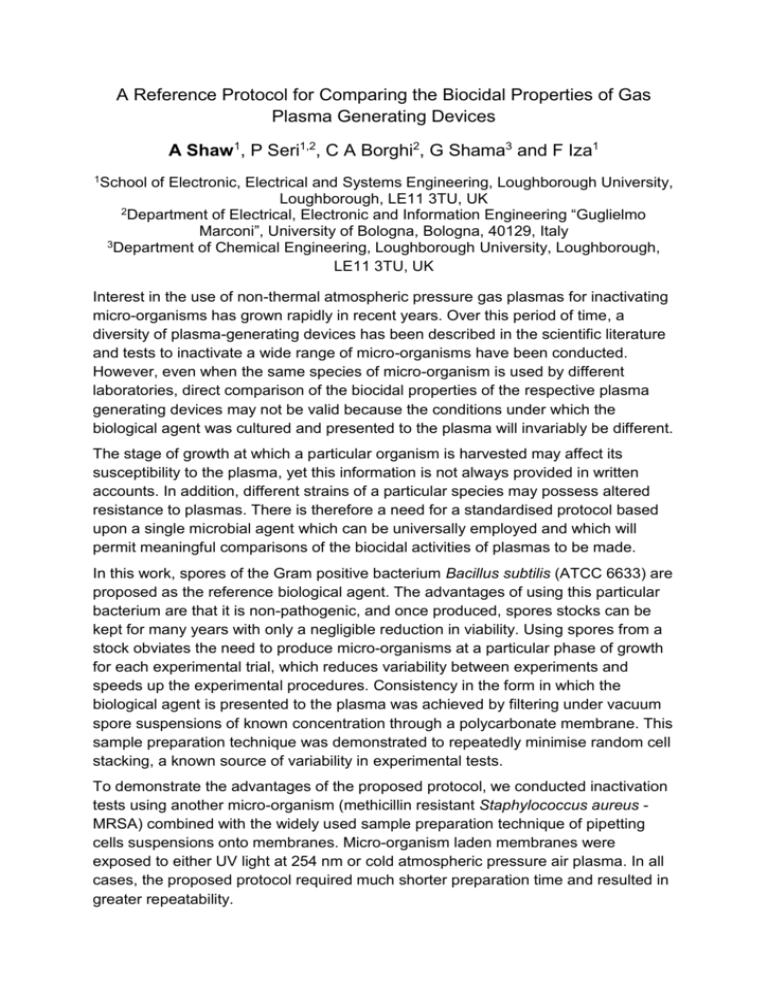
A Reference Protocol for Comparing the Biocidal Properties of Gas Plasma Generating Devices A Shaw1, P Seri1,2, C A Borghi2, G Shama3 and F Iza1 1School of Electronic, Electrical and Systems Engineering, Loughborough University, Loughborough, LE11 3TU, UK 2Department of Electrical, Electronic and Information Engineering “Guglielmo Marconi”, University of Bologna, Bologna, 40129, Italy 3Department of Chemical Engineering, Loughborough University, Loughborough, LE11 3TU, UK Interest in the use of non-thermal atmospheric pressure gas plasmas for inactivating micro-organisms has grown rapidly in recent years. Over this period of time, a diversity of plasma-generating devices has been described in the scientific literature and tests to inactivate a wide range of micro-organisms have been conducted. However, even when the same species of micro-organism is used by different laboratories, direct comparison of the biocidal properties of the respective plasma generating devices may not be valid because the conditions under which the biological agent was cultured and presented to the plasma will invariably be different. The stage of growth at which a particular organism is harvested may affect its susceptibility to the plasma, yet this information is not always provided in written accounts. In addition, different strains of a particular species may possess altered resistance to plasmas. There is therefore a need for a standardised protocol based upon a single microbial agent which can be universally employed and which will permit meaningful comparisons of the biocidal activities of plasmas to be made. In this work, spores of the Gram positive bacterium Bacillus subtilis (ATCC 6633) are proposed as the reference biological agent. The advantages of using this particular bacterium are that it is non-pathogenic, and once produced, spores stocks can be kept for many years with only a negligible reduction in viability. Using spores from a stock obviates the need to produce micro-organisms at a particular phase of growth for each experimental trial, which reduces variability between experiments and speeds up the experimental procedures. Consistency in the form in which the biological agent is presented to the plasma was achieved by filtering under vacuum spore suspensions of known concentration through a polycarbonate membrane. This sample preparation technique was demonstrated to repeatedly minimise random cell stacking, a known source of variability in experimental tests. To demonstrate the advantages of the proposed protocol, we conducted inactivation tests using another micro-organism (methicillin resistant Staphylococcus aureus MRSA) combined with the widely used sample preparation technique of pipetting cells suspensions onto membranes. Micro-organism laden membranes were exposed to either UV light at 254 nm or cold atmospheric pressure air plasma. In all cases, the proposed protocol required much shorter preparation time and resulted in greater repeatability.

